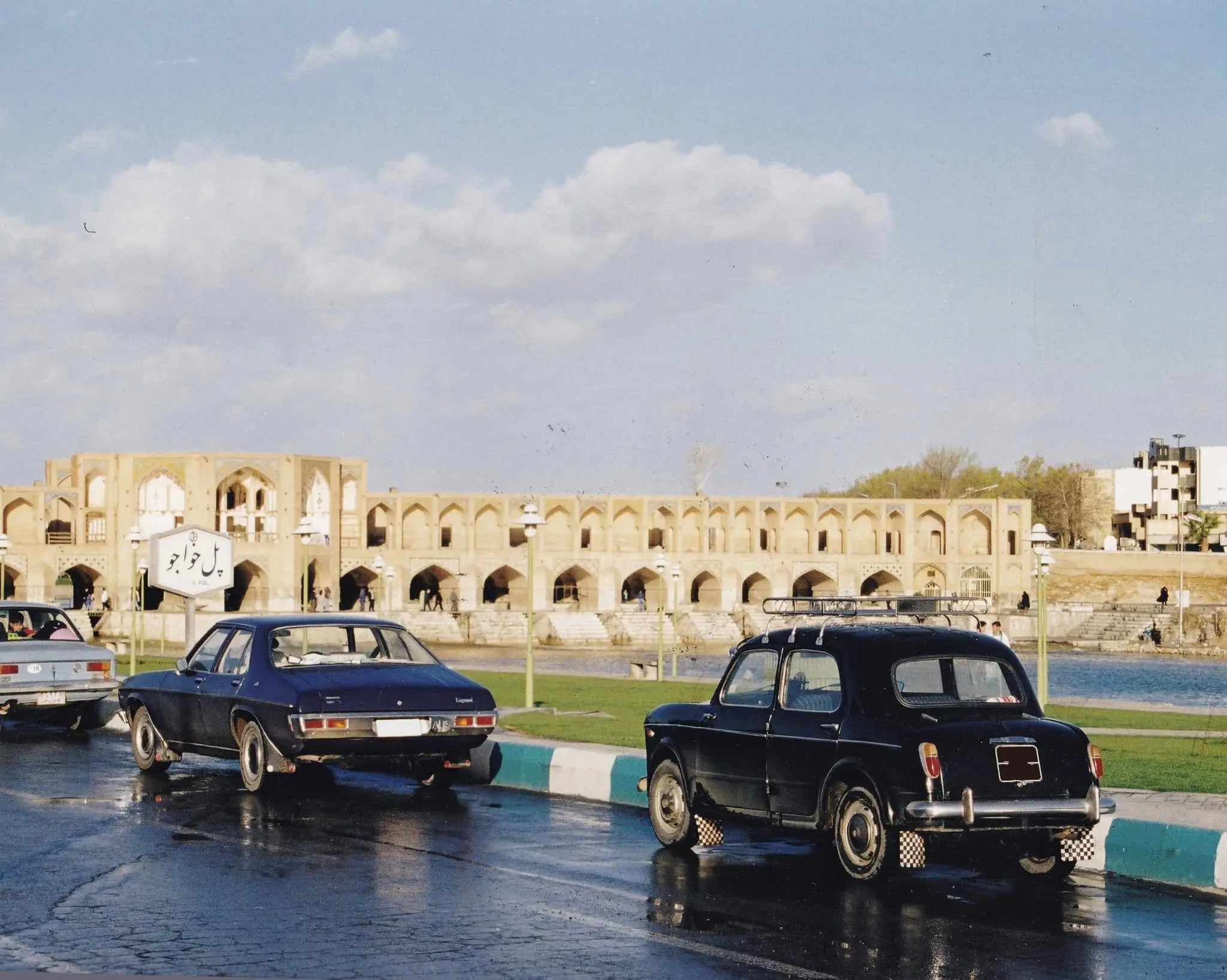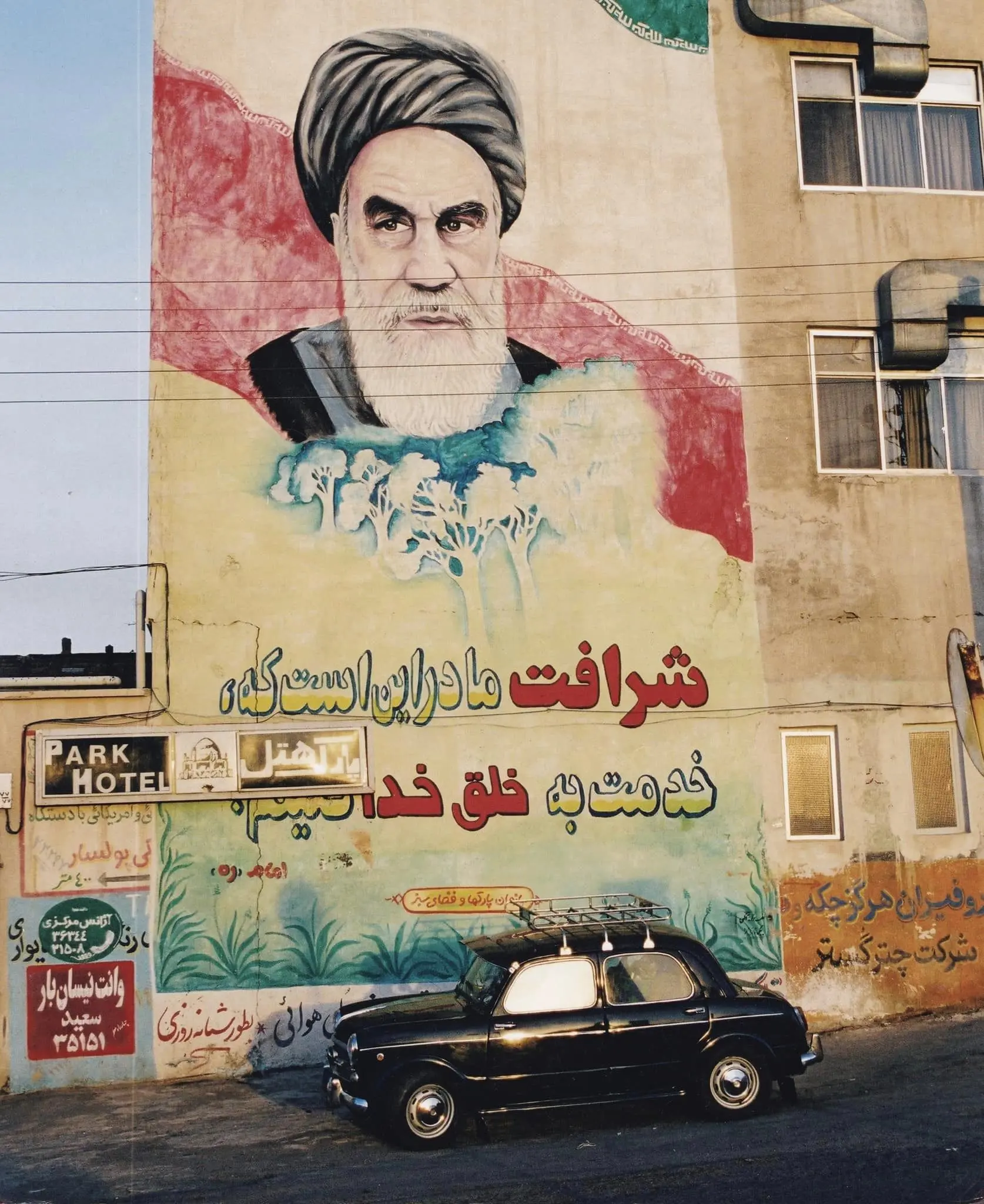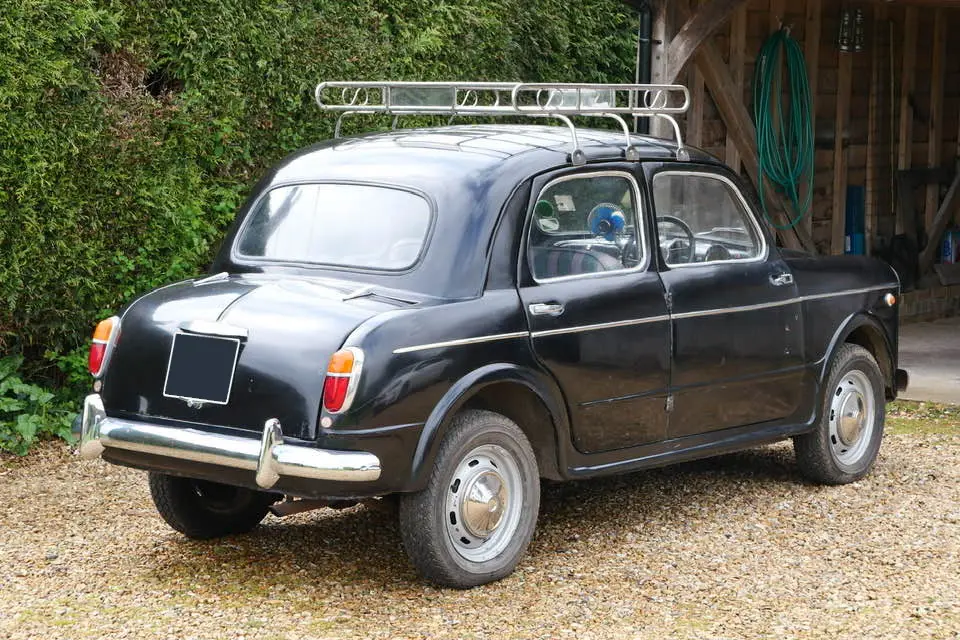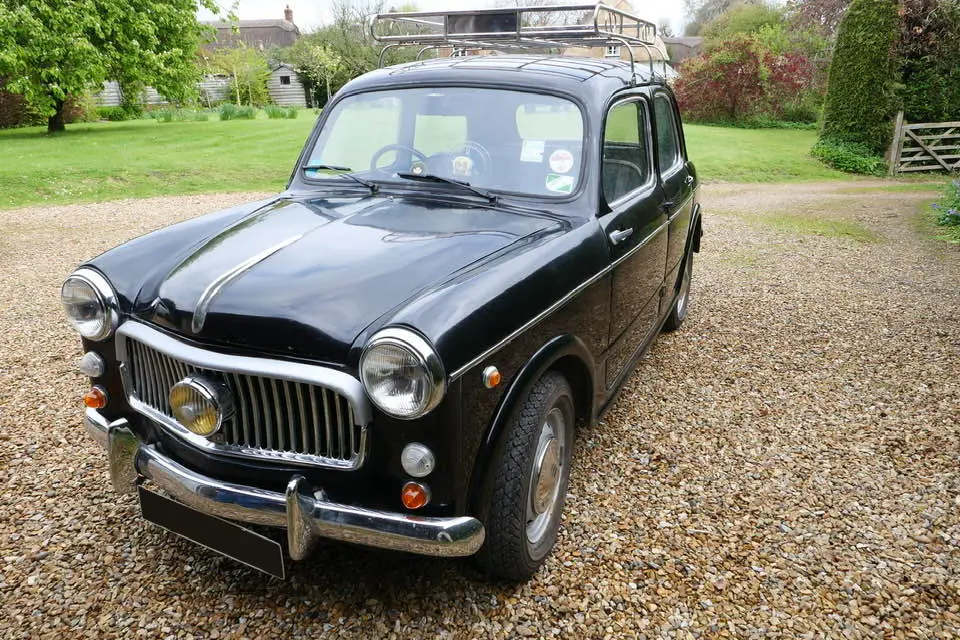A 7,500 MILE JOURNEY IN A 1954 FIAT 1100-103
18 June 2024
Any 1954 Fiat 1100/103 is a splendid machine – the small saloon that was to post-war Italy what the Morris Minor was to the UK. But the example offered for sale by Dorset Vintage & Classic Auctions on the 20th June is even more exceptional. Firstly, it is an Indian-built example, and secondly, it underwent a remarkable journey from Bangalore to England, encompassing Mumbai, Istanbul, and Bucharest en route.

Premier Automobiles Ltd of Mumbai built the Fiat for the Indian market. Seth Walchand Hirachand and Shri Advani created the firm, and in 1939, they visited the USA to meet with the ‘Big Three’ car makers: Ford, Chrysler, and General Motors. They aimed to form an Indian motor company that paid royalties to a Western manufacturer who would train local technicians.
The following year, Hirachand and Advani signed an agreement with Chrysler, and 1944 marked the establishment of Premier Automobiles. However, in 1954, the government added incentives for local parts production to its import duties to encourage a local motor industry. In addition, Premier decided that a smaller car would be better suited to the Indian market than a Plymouth. Their next step was to build the 1100-103, which Fiat unveiled at the 1953 Geneva Motor Show.

Indian production of the Fiat commenced in 1954, and the 1100-103 gained the nickname “Dukkar”— Gujarati for wild pig. Premier made versions of the 1100, most famously the ‘D’ as the Padmini until as recently as 2001. At one point, there was even an 18-year waiting list for a new model, leading to the popular joke, “Book a new Fiat now—and let your kids take delivery!”
Our story now moves to 1994, when Julia Moore, a British ceramics designer living in India needed cheap everyday transport. She wanted to drive a locally built car rather than an imported Japanese 4x4 “so I could fit in with other Indian motorists and not stand out.” Her husband’s driver suggested the Fiat and they discovered the black 1100-103 in a Mumbai side street and acquired it for 40,000 rupees.

Ms. Moore’s Fiat was one of the first to be made by Premier Automobiles. She told Auto Italia: “I learned that driving on the left was optional rather than mandatory and that the horn was more important than the brake, clutch and gear lever combined”. When the Moores prepared to return to the UK, Julia decided not to have the Fiat shipped to their new home but to drive it - a journey that would last two months and encompass ten countries.
The 7,500-mile route would commence in Bangalore, with Julia driving to Mumbai via Goa. The Fiat would be shipped in a crate to Iran, where her 19-year-old stepson Alexander would act as co-driver as far as Istanbul. An important aim of the journey was to raise £10,000 for Rescue a Child, a Mumbai charity for street children.

The expedition began in March 2000, after Julia endured a vast amount of paperwork. One of the first challenges commissioned to prepare the Fiat had utterly botched the job. Fortunately, a mechanic friend of Julia was able to rectify the damage. Julia commissioned a special roof rack, and “the boot was filled with spares. My personal luggage was on the back seat”.
Julia’s practice was to set off at 630 a.m. and drive until lunchtime each day to allow time for sightseeing. Her daily budget was the equivalent of $10, and she did not have a mobile phone— “and of course there was no GPS!” She also tried to ignore the disturbing sight of many wrecked cars abandoned at the side of the road.
The adventures on Indian roads included darting past heavily laden Ashok Leyland lorries, and an encounter with a not very happy elephant mahout outside of Mumbai. Julia resolved this dispute by slipping a rupee into the elephant’s trunk – at one stage she was afraid the Fiat was going to be stepped on.
At this point, we should mention that a 1954 1100-103’s interior comforts are somewhat limited by modern standards. The ‘air conditioning’ took the form of a fan attached to the dashboard, which also served as a demister. However, the heat and various tribulations did not prevent Julia from managing to travel 300 km per day. “Despite the alarming gradients, switchback corners and pot-holed surfaces of the road, the little car rarely faltered”. She and her intrepid Fiat even featured in a front-page story in The Bombay Times.
At last, the Moore Fiat arrived in Mumbai, where finding a shipping agent to arrange the 1100’s passage to Bandar Abbas on Iran’s southern coast meant a three-week delay. The sea voyage took seven days, but it was 100km into the next stage of the road journey that disaster struck. “A red light on the dashboard started glowing, which is the last thing you want to see! I really did think it was curtains for us”.

The warning was for low oil pressure, and when Julia and Alexander opened the bonnet, “oil splattered absolutely everywhere.” The problem was with the pipe between the engine block and the filter. Fortunately, a passing police officer noticed them, and Julia could speak some Farsi. “The policeman flagged down a lorry driver and ordered him to fix the Fiat—I lent him my penknife for the job.”
In fact, Julia remembers how people went out of their way to make her and Alexander feel welcome. “A right-hand-drive Fiat did stand out among all the Paykans, the Iranian-built Hillman Hunter”. After crossing the border into Turkey, the Fiat had to endure the rigours of a 10,000-foot mountain pass. The poor road conditions resulted in the fuel tank having to be completely rebuilt.
Other problems while driving overland through Europe included the dynamo stopping charging outside of Bucharest, which Julia recalled as “a moderately nightmarish experience. I then found some mechanics, but the following morning, the battery was flat. I remember the Fiat breaking down at the border crossing”.
In Vienna, Julia was reunited with her husband, and her further adventures included problems with the starter motor in Austria. In Germany, extremely unchivalrous lorry drivers attempted to run Julia off the road. The Fiat’s limited performance on the autobahn seemed to make them irate - “It was awful, and in Germany, lorries were not allowed to overtake, and as my 1100-103 was so slow, it made the drivers very angry”. On paper, the Fiat’s top speed is 71 mph, with 0-60 in just over 29 seconds; Julia cannot remember travelling over 45 mph.
Finally, the remarkable team of car and owner arrived in the UK. Somewhat surprisingly, Julia says: “Fiat in Europe just did not seem to be interested in the car – it was as though my 1100 was an embarrassment to them”. Of course, the black Fiat is a credit to its marque and is now awaiting its next chapter. Its new custodian will also receive a signed copy of Julia’s book about the journey.
And should the Fiat’s new owner wish to embark on another 7,500-mile expedition, it is primed and ready.
With Thanks To: Julia Moore - https://www.tilesbytextiles.com/ and Dorset Vintage and Classic Auctions - https://www.dvca.co.uk/
